If You Thought The VHX Marine One Contract Was Big, Just Hang
On...
By ANN Senior Correspondent Kevin "Hognose" O'Brien
Coming out of Heli-Expo, everyone is talking about the way that
European manufacturers have been cleaning American clocks in the
contract stakes. Now, there is a new contract looming on the
horizon, one that is certain to see a European win, as both of the
competitors are largely European. They will put on some American
fig leaves as Agusta-Westland did to win the VHX contract, but
large parts of this contract will go across the pond, no matter who
wins.
The contract is for the new Army fixed-wing transport plane, and
the two contenders are Alenia-Lockheed's C-27J, whose roots are
mostly in Italy, and EADS's C-295, which has a Spanish background.
The Army wants to buy 33 airplanes and retire the C-23s by 2011;
this rapid schedule is what's driving the Pentagon towards
off-the-shelf airplanes.

Historical Background
Prior to 1966, the US Army operated a fleet of fixed-wing STOL
aircraft to service remote Special Forces camps. In that year, a
turf battle with the Air Force was resolved by the Army handing
over its DHC-4 Caribou airlifters to the Air Force, which
immediately began planning to phase them out, and replaced them
with... nothing. For many years the Army operated no light cargo
planes, partly because they were trying to hold the USAF to its end
of the 1966 agreement, and partly because Army Aviation is in the
grip of helicopter pilots, who tried to replace the C-7 (as the
military termed the Caribou) with copters.
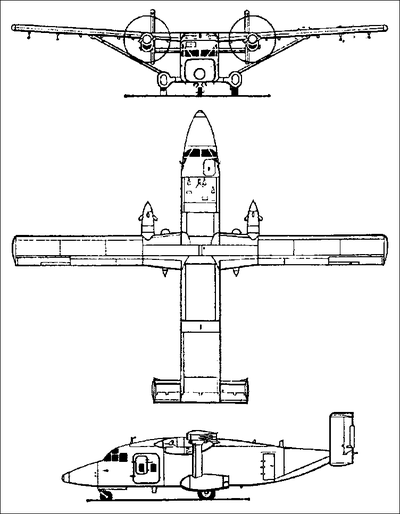
In recent years, the Army National Guard has operated a small
fleet of Shorts C-23 Sherpas (line art, above) in a variety of
roles. But they have increasingly been pressed into service as
light airlifters. The Army, in which even conventional units now
operate more like Special Forces, finds itself valuing that lost
Caribou capability, and the Air Force still isn't interested in
providing it.
So the Army has decided that, no matter how irritated this makes
its brethren in blue, it's going to buy some cargo planes. Big
enough to haul what the green machine needs hauled, but not so big
as the Air Force's C-130s.
Why Not Just Buy More C-23s?
It's cold to say this, but: if it could do the job, the Army
probably would. The Sherpa is as unloved as it is unlovely. It is
slow, flies low (it's unpressurized), and despite looking like it
ought to be hell-for-STOL, it's anything but, needing long runways
to heave itself uncertainly into the air. While some pilots grow to
love them, as happens with any aircraft, others are more critical.
Passengers who travel in the noisy, drafty cargo bays liken it to
being trapped in the middle of a practicing gong orchestra on a
Tibetan mountaintop -- maybe that's where the name "Sherpa" comes
from, because the plane does not achieve the feats of labor at high
altitude that brought fame to its namesakes.
A well-publicized C-23 inflight breakup has contributed to the
low confidence in the airframe. The breakup seems to have resulted
from flight into thunderstorm conditions, but a celebrated lawsuit
has considerably muddied the causative waters in the public eye,
claiming essentially that the plane was so poorly built it just
fell apart in the air. Again, from the official accident report, no
such thing seems to have happened, but the perception counts -- and
it's not as if the Sherpa had a lot of sterling qualities to build
crew loyalty.
The C-23 has also been poor at fulfilling one of its basic
missions: paratroop training. For much of the machine's Army
career, it has been restricted from conducting parachute
operations, especially static-line operations, due to a slew of
safety problems. (At this writing it is cleared for s/l drops
again).
The C-23 was never meant to do the jobs it's doing now. The
National Guard bought a fleet of them, explicitly for parachute
training of airborne troops, especially the two Guard Special
Forces groups. The plane's bug-bruising cruise speed (around 180
kt), altitude aversion, and girly-man weightlifting capacity are
not factors when all you're doing is lifting groups of paratroops
to low four-digit (or high three-digit) altitudes for static line
parachute jumps. But while that was the plan, the relatively low
profile of the Guard SF units meant that the C-23s were assigned to
OSACOM, the Operational Support Aircraft Command, which mostly
flies VIPs around in military bizjets. The Sherpas gave OSACOM a
cargo-lifting capability that the command hadn't had before, and
for that they're welcome, but they're a lot slower than FEDEX. On
the plus side, with their simple systems and bulletproof PT-6
engines, they're a lot more easily maintained than more
sophisticated planes. Maintenance of the Sherpas is contracted out
(at the moment, to Bombardier).

The Sherpa has served well in Iraq, but its inability to climb
out of the range of insurgent anti-aircraft weapons means that it
normally flies at 100 feet AGL -- which is wearying for the crews.
So far, low-and-flat-out has worked, and no Sherpa has taken hits.
Moreover, while the plane itself has its limits, the concept of
what it's doing -- responsive, highly available airlift -- has
whetted the Army's appetite for its own cargo fleet. Ironically,
the Sherpa's greatest success, its doughty performance in the
intra-theater mission in Iraq, is the final nail in its coffin.
The C-27J and C-295 may not have been "invented here," but
neither was the C-23, which was built by Shorts Bros. in Northern
Ireland. It starts life as a Shorts 360 airliner and is converted
to cargo configuration by an add-on kit.
In This Corner, The C-27J
The C-27 Spartan was designed by Lockheed Martin and Alenia
(formerly Aeritalia). It resembles a scaled-down C-130J in a number
of ways, and in a couple of significant ways it is. It has C-130J
engines and a cockpit where any current-model Hercules pilot would
be instantly at home. But the bulk of the airplane is the Alenia
G-222, an airplane that's flown for Italy and other operators for
some 35 years. The US Air Force operated the G-222 as the C-27A for
nine years in a specialty cargo mission in Central and South
America; when the US stopped supporting the Panama Canal in 1999,
the 10 American G-222s were stored at AMARC. Over 100 G-222s in all
were sold worldwide.
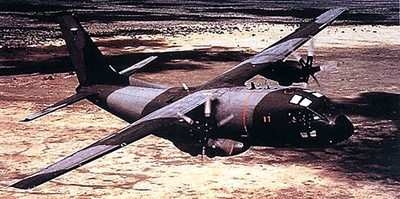
A much more modern powerplant is the secret to the C-27Js
performance advantage over the ill-fated A model. The C-27J is
equipped with two 4,637 SHP Rolls-Royce AE 2100D3 turboprop engines
with Dowty six-bladed composite propellers -- essentially half a
C-130J's powerplant.
The Spartan is also robust, with its normal operating envelope
extending to +3.0g, significantly more than other airlift
airframes. (The -1 for the C-130 limits pilots to +2.0 and -0 g!).
Its 315 kt cruise speed is 55 knots faster than the CN-295s latest
stated max cruise speed (and until recently, EADS was saying 245
kt).
The C-27J is a bigger airplane than the C-295, and that
translates both into comfort for the crew and performance for the
mission. The cross section of the cargo area is about seven by
eleven feet. Higher, heavier and faster it can do -- and that means
it has more oomph to spare for short fields. At MTOW of 66,0000
lbs, it can take off from a 1,600 foot field over a 50-foot
obstacle. It also has greater unrefueled range -- over 1,000 miles
greater.
The C-27J has a nearly unique cargo-handling trick: its
hydraulics can make the plane "kneel" to ease loading and
unloading, or match the height of a truck or K-loader.
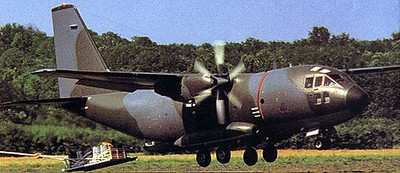
The only sales to date are 12 airplanes to Italy, and a similar
quantity to Greece. It is believed to have the inside track for
Canada's DHC-5 Buffalo SAR replacement.
And In This Corner, The C-295
The C-295 of EADS has as tangled an ancestry as the European
aerospace giant itself. It's a stretch of the CN-235 which was
originally a Spanish/Indonesian partnership in an aircraft that is
itself a stretched, pressurized, descendant of the venerable CASA
C-212. The Indonesian partner, IPTN, is out of the program, and
it's all-European now, run by EADS's Spanish subsidiary, CASA.
Compared to the C-27J, the C-295 is a better bargain all round as
well -- it has lower acquisition and operating costs. Its smaller
cousin, the CN-235, is entering Coast Guard service as the next
generation maritime patrol aircraft. Over 250 CN-235s are flying,
and scores of C-295s have been sold in the last few years.
The C-295 has already been completely developed for
European-style (and Navy-style) pod-and drogue air refueling, which
may not matter to the Army (but probably should). It also has an
integrated defensive system, with radar warning, chaff and flares.
It may not have quite the cubes or lifting capacity of the Spartan,
but it is a great deal cleaner economically. To see this, compare
the sponsons into which the main landing gear retract. The C-27J's
resemble, what else?, the C-130 -- which had its first flight in
1954. A close look at the slick, ultra-streamlined sponson on the
C-295 and you can see that EADS aerodynamicists have been much less
complacent than those at Alenia or Lockheed.
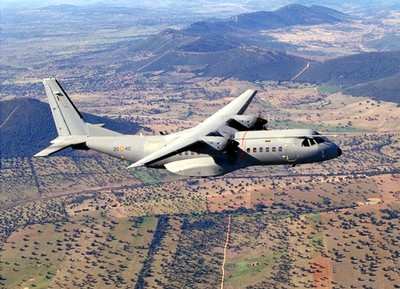
If the C-295 is so clean, why is it so slow? Its 260 knots is
still a quantum leap over the sluggish C-23, but it isn't the speed
demon (or the altitude king) that the C-27J is. Why not? The guilty
party is the powerplant: the C-295 has Pratt & Whitney Canada
PW127G engines, driving Hamilton Standard 568F-5 six-bladed
propellers. The PW127 is best known for providing the motive power
of the DHC-8 Dash 8. These great engines yield "only" 2,645 SHP
each, compared to the 4,637 of the C-27J's Rolls-Royce plants.
(Just to add to the confusion, the engine with the venerable
British name is American, and the one with the great American name
is Canadian. Got that?). That lower power translates, of course,
into much less guzzling of fuel; but also less speed, altitude, and
longer runway requirements. The C-295 needs 2,700 feet to clear a
50' obstacle.
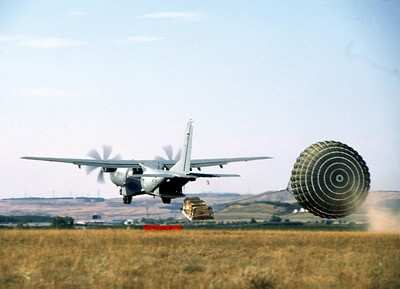
The C-295 has had good success in the marketplace, with Poland,
Switzerland, Malaysia, the UAE, Jordan, the UAE, Argentina, and
Saudi Arabia all buying some. Greece came close before choosing the
C-27J, and all around the world these two very similar, but very
different, airlifters have been going head-to-head in the last
couple of years.
Analysis: Do We Dare Make A Prediction?
Army special operations forces are already familiar with the
source planes, the G-222 and the CN-235 (not to mention that the
Army's special operators regularly employ contractor-operated CASA
212s both at Bragg and in the combat theater). And indeed, both are
good planes; the only bad decision the Army can make is to stick
with the Sherpa.
If either plane is selected, and the build quantity remains as
high as projected, the machines might be assembled in the USA. But
the Army wants these planes quickly -- beginning this year. So at
least the initial order will be assembled overseas. However, Alenia
can only build 16 C-27s a year, and is committed to 12 airframes
for AMI (the Italian air force), and a dozen or more for Greece.
That means that some C-27s might have to be built in the USA, or
risk losing the order to EADS which could probably produce all 33
CN-295s in under two years if need be. The Army doesn't really need
the planes that quickly -- it will take time to train crews, and it
can still fly the Sherpas for now (but once either of these planes
gets into inventory, expect unrest from the remaining Sherpa pilots
and loadmasters). EADS has already acquired a 13,000 SF facility in
Mobile, AL, for maintenance of the 235s the USCG is buying, and has
engaged in preliminary talks about an assembly plant in South
Carolina.
Another wild card is interservice politics: specifically, the
attitude of the US Air Force. Forty years ago, the USAF was
bitterly opposed to the Army operating cargo aircraft -- but the
USAF proved to be even more hostile to the idea of supporting the
Army with intra-theater airlift. The blue suits are now riven by
the dual possibility, of losing part of their "union shop" to the
Army, but in return getting rid of a mission that they never wanted
and that they only performed in the most grudging and perfunctory
fashion. In this, the Army's years of operation of the Sherpas
help. The Air Force never would have wanted such a slow, flimsy,
unpressurized dog, and so they didn't develop a lot of jealousy
over it. And they have had time to learn that Big Green still calls
Big Blue for the things that count -- the paratroops.
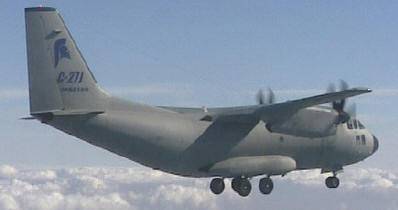
WIth the planes quite evenly matched, and either one being a
quantum leap forward from the rickety Sherpa, the decision will be
made based on the few large differences that there are -- so it
will come down to what the army weights more heavily: the
robustness and performance of the Spartan, or the efficiency of the
CN-295?
I believe that the Army will select the C-27J Spartan, and that
the key reason will be its superior short-field performance. (I
also believe that no pilot will EVER land one on an airfield where
the EADS plane couldn't land and take off in perfect safety). And I
believe that the C-27J will sell to those operators for whom price
is no object, and the C-295 will do great among those nations that
worry about the size of their fuel bill.
And by 2007 you'll be buying Revere Ware that used to be a C-23
Sherpa... and that's not a bad thing.
 ANN's Daily Aero-Term (04.14.24): Maximum Authorized Altitude
ANN's Daily Aero-Term (04.14.24): Maximum Authorized Altitude ANN's Daily Aero-Linx (04.14.24)
ANN's Daily Aero-Linx (04.14.24) Classic Aero-TV: 'We're Surviving'-- Kyle Franklin Describes Airshow Life 2013
Classic Aero-TV: 'We're Surviving'-- Kyle Franklin Describes Airshow Life 2013 Aero-News: Quote of the Day (04.14.24)
Aero-News: Quote of the Day (04.14.24) Airborne 04.09.24: SnF24!, Piper-DeltaHawk!, Fisher Update, Junkers
Airborne 04.09.24: SnF24!, Piper-DeltaHawk!, Fisher Update, Junkers










